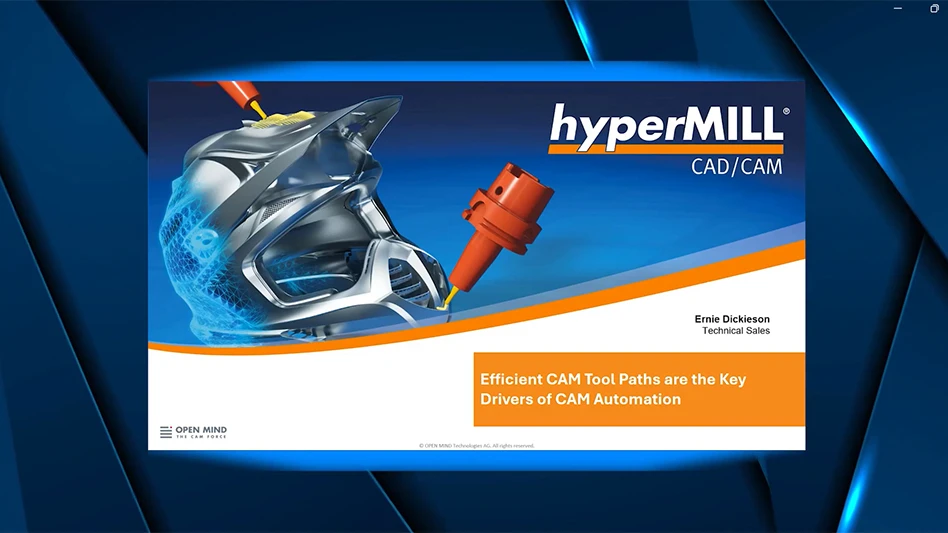
In the Super Rig at Goodrich Corp.'s landing gear facility in Oakville, Ontario, Canada, LMS engineering consultants subjected a body landing gear prototype assembly for the Airbus A380 to Experimental Modal Analysis (EMA). The major landing gear mode shapes extracted from the test data supported structural studies at Airbus and helped engineers verify finite element (FE) models generated by Goodrich's Landing Gear division.
Goodrich landing gear dates back to 1926, when Cleveland Pneumatic Co., now part of Goodrich, introduced the industry's first air-oil landing gear strut. Goodrich merged with Menasco in 1999 to become the world's largest supplier of landing systems. Today, Goodrich delivers landing systems to major aircraft companies, including Agusta, Airbus, Boeing, Bombardier, Gulfstream and Lockheed Martin. The success of Goodrich's Landing Gear division is measured with each takeoff and landing that is executed with its equipment. Since the Airbus A380 weighs approximately 1,300,000 lb when fully loaded with passengers, luggage and fuel, this double-deck jetliner sets rigorous requirements on landing gear design and development. To assure safe and comfortable takeoff, landing and taxiing of this super-size aircraft, Airbus selected Goodrich for the development and production of the A380 landing gear systems.
Like all other physical structures, landing gears have natural frequencies. A natural frequency is the frequency at which the structure would oscillate if it were disturbed from its rest position and then allowed to vibrate freely. Resonance occurs when a force is applied to the structure at a frequency that coincides with a structural natural frequency. During resonant vibration, the response displacement may increase until the structure experiences buckling, yielding, fatigue or some other failure mechanism. Thus it is very critical to understand the natural frequency of any potential landing gear design to ensure that it is not excited at a natural frequency. Experimental modal analysis was used here to determine the modal frequencies of a reference design. This same design was modeled using finite element analysis (FEA); the analysis and test results were compared. Once the accuracy of the FE model was proven, it could be used to evaluate the modal frequencies of a large number of potential designs.
To support the structural testing campaign to be performed on the right-hand body landing gear system, Goodrich contracted the U.S.-based team of LMS Engineering Services. "The LMS assignment involved EMA on a landing gear system, which allowed Goodrich to validate FE models of this rather complex mechanical assembly," says Alvin Fong, manager of Landing Gear Performance at Goodrich's Oakville landing gear facility. "The six-wheel landing gear system weighs approximately 12,000 lb, and its size exceeds 25ft when fully extended. In landing gear system development, it is our task to meet the required modal stability and structural performance to ensure that the gear will safely react to all loads and circumstances it will encounter throughout its service life," Fong adds.
The central feature of the Goodrich Landing Gear test facility in Oakville is the Super Rig, an extremely large steel structure that encompasses nine test bays, each capable of handling an A380 body or wing gear. The entire Super Rig structure sits in a 3ft deep pit approximately the size of two football fields. The body landing gear prototype to be subjected to the modal test campaign filled bay #2 to the limit. The test setup also required LMS to fabricate two solid stands, each filled with 5,000 lb of concrete. To avoid free-play in landing gear joints as much as possible, LMS consultants pre-loaded the body landing gear unit with static forces they applied vertically through soft bungee straps. The measurement equipment consisted of latest-generation SCADAS 316 hardware as well as LMS Test.Lab software, including the LMS PolyMAX modal parameter estimator. The equipment also controlled the excitation management of shaker systems.
The actual modal analysis test campaign started with the selection of the landing gear modes. LMS consultants quickly obtained insight into modal resonance through the sum blocks function of LMS Test.Lab, which emphasizes modal resonance by displaying the summation of all measured frequency response functions (FRFs). FRFs are transfer functions that express the structural response to an applied force as a function of frequency. Based on the acquired data, the individual modal parameters were extracted using the LMS PolyMAX curve fitter. The modal parameters then served as a basis to synthesize FRFs through calculation. The high level of correlation between measured and synthesized FRFs showed that the modal analysis was successful in accurately reproducing the measured FRFs.
Fong says, "The most significant modes retrieved for the landing gear static stroke configuration were fore-aft, lateral and torsion resonance below 15Hz. For extended stroke, the identified fore-aft, lateral and torsion modes were lower than static stroke. In general, the measured mode frequencies turned out to be lower that their predicted counterparts. The project confirms the modal characteristics of the right-hand body landing gear system Goodrich developed for the new Airbus A380 airliner."
The survey also explored potential dynamic influences of the Super Rig on the mode shapes of the actual landing gear, and validated the need for further testing to characterize the attachment points of the landing gear to the Super Rig. The modal analysis showed strong coupling of the landing gear and test rig dynamics, particularly in the 5Hz and 8Hz regions.
In reviewing and discussing the test data, Fong's experience, as well as LMS engineering consultants' modal testing expertise, was most helpful in delivering better insight into landing gear performance. "The experimental modal analysis test campaign helped further enhance virtual models of the body landing gear, supporting both stability studies and structural investigations," Fong concludes.

Explore the 2009 Buyers Guide Issue
Check out more from this issue and find your next story to read.
Latest from Aerospace Manufacturing and Design
- Piper Aircraft receives its largest ever domestic trainer order
- Miniature, high force-to-size linear voice coil servo motor
- MagniX, Robinson to develop battery electric R66 helicopter
- Zero-point clamping modules
- Hartzell electric engine propeller earns FAA approval for AAM
- Thin profile flame and thermal barrier
- Guill Labs offer materials and extrusion testing
- High production vertical honing systems





